Abstract
Radio-opaque pellets (ROP) similar to those currently used to measure gastrointestinal transit time have been compared with chromium sesquioxide to assess their suitability for use as inert markers in the gut. Five healthy subjects took both markers with every meal for two separate three week periods while taking metabolically controlled diets. Overall recovery of both markers was satisfactory; ROP 99.7 +/- 0.3% (SD) and chromium 97.8 +/- 1.6% (SD). A comparison of the amount for each marker recovered in 69 separate faecal collection periods of various lengths showed close agreement (R = 0.99) and the tail-off in marker excretion after cessation of ROP and chromium intake was similar, although slightly more prolonged for chromium. The amount of marker retained in the gut was 13.5% greater for chromium at the end of the three week study periods. Both markers proved satisfactory for correcting variations in faecal calcium output. The ROP, however, offer clear advantages over chromium in that they are considerably easier and quicker to measure, the method of measurement using x-rays does not alter the stools and faecal handling is minimised. The precision of ROP measurement is greater and, because of the variety of ROP available, they offer more flexibility for metabolic studies. In addition, stool by stool analysis is possible enabling simultaneous measurement of mean transit time to be made in experimental subjects.
Full text
PDF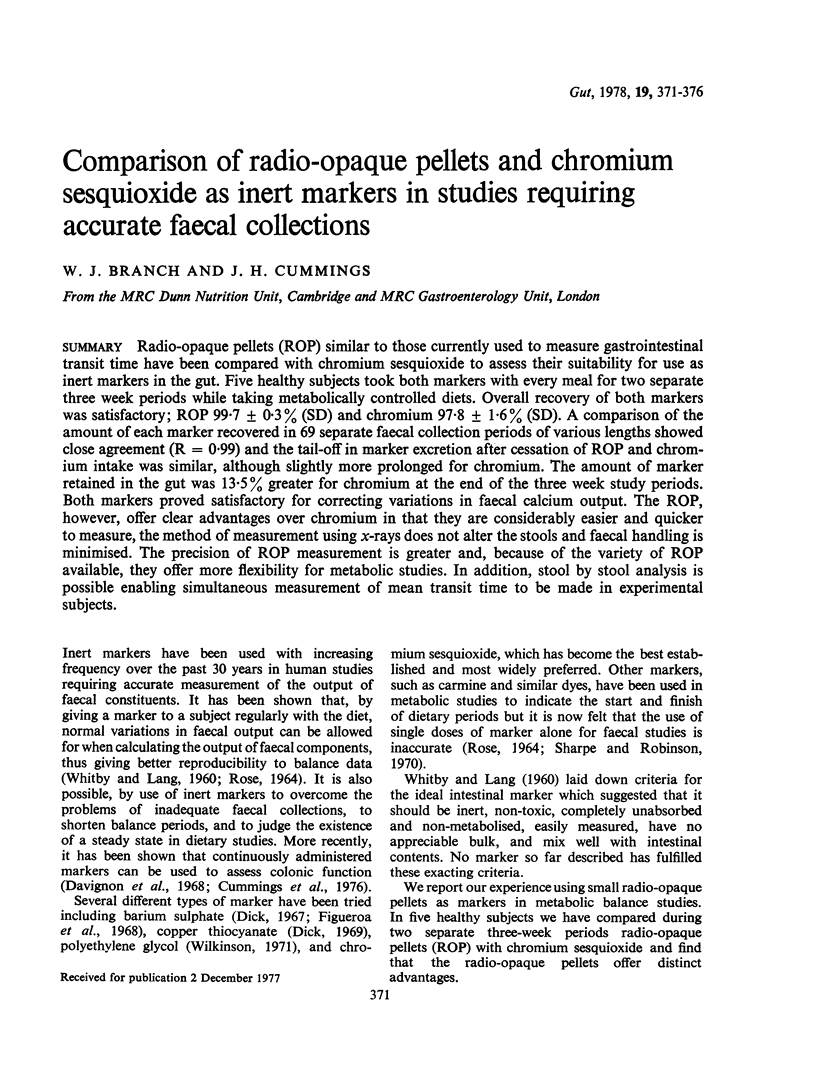
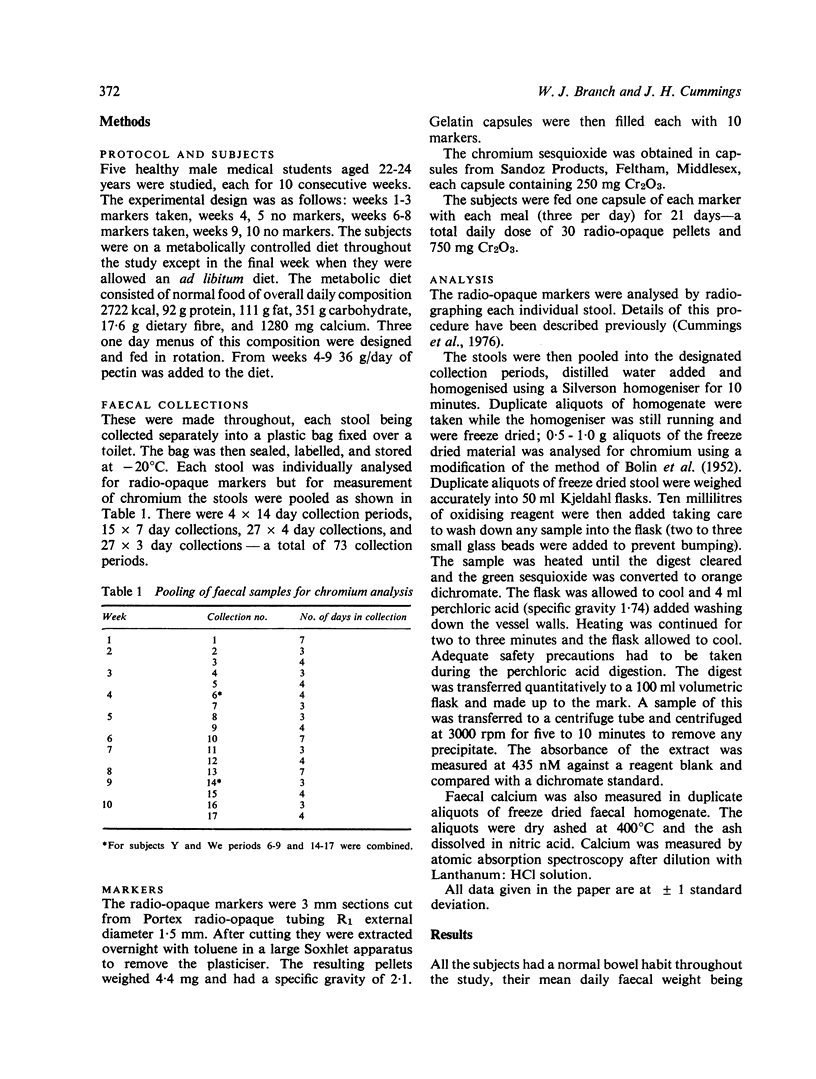
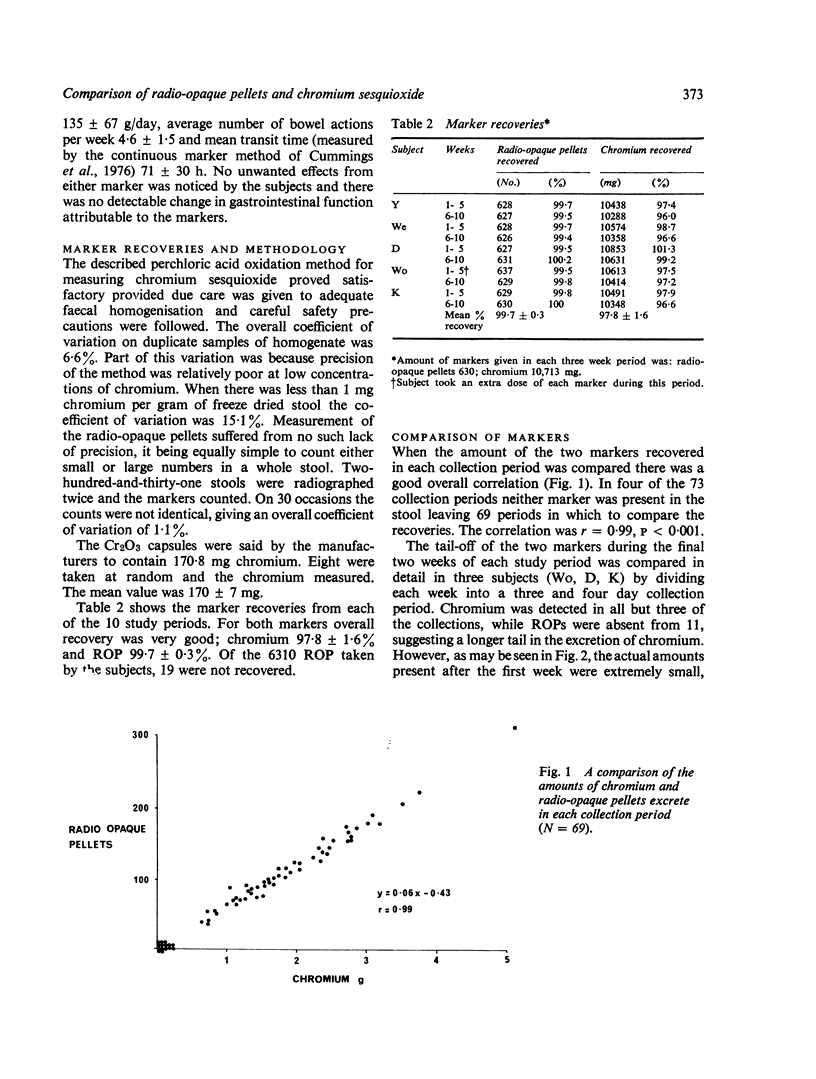
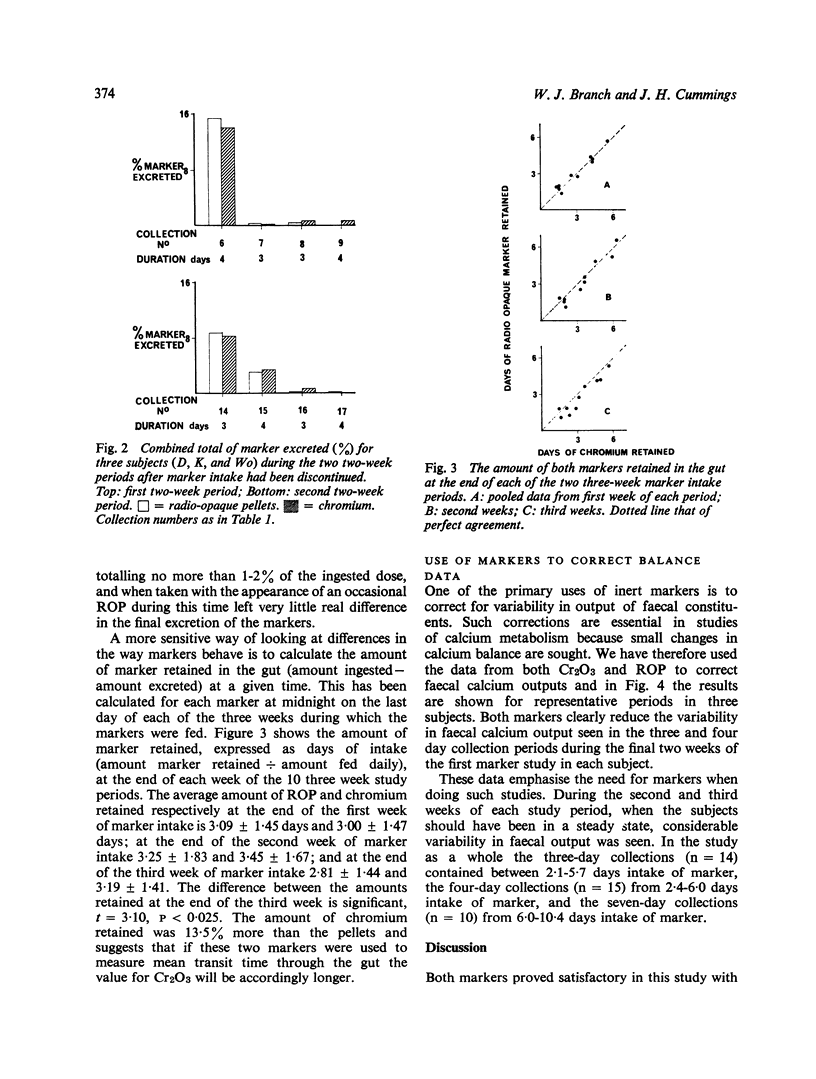
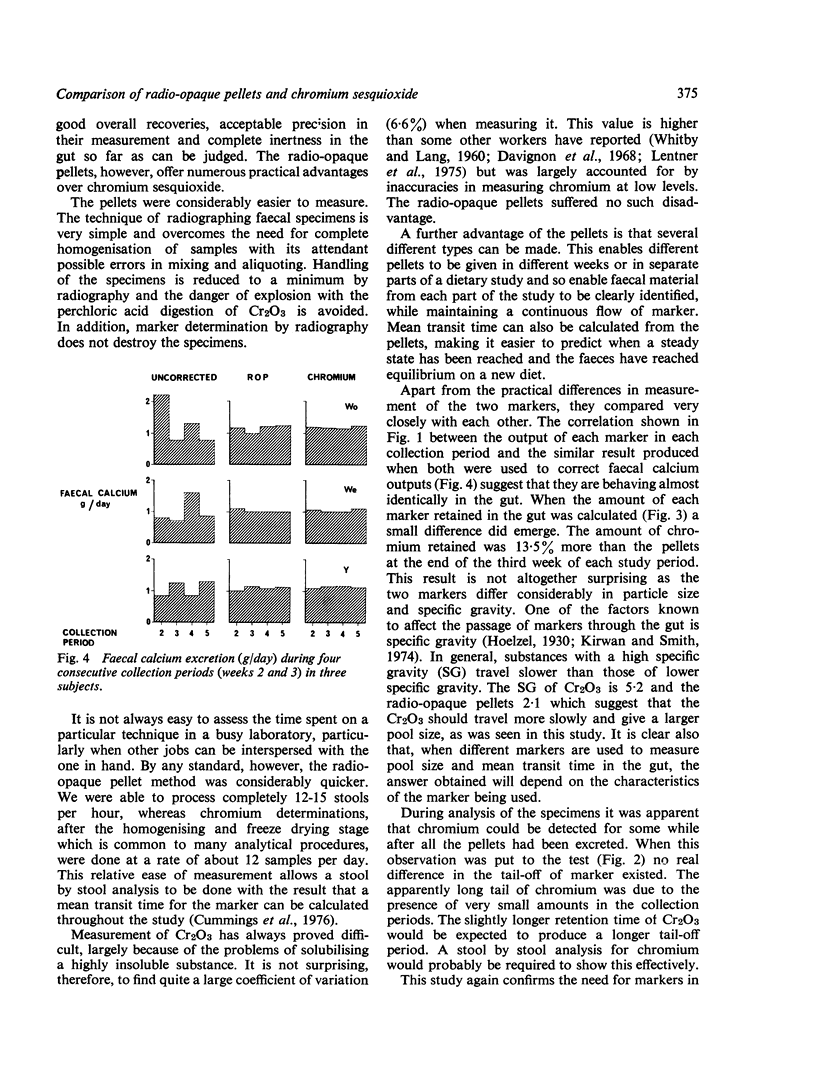
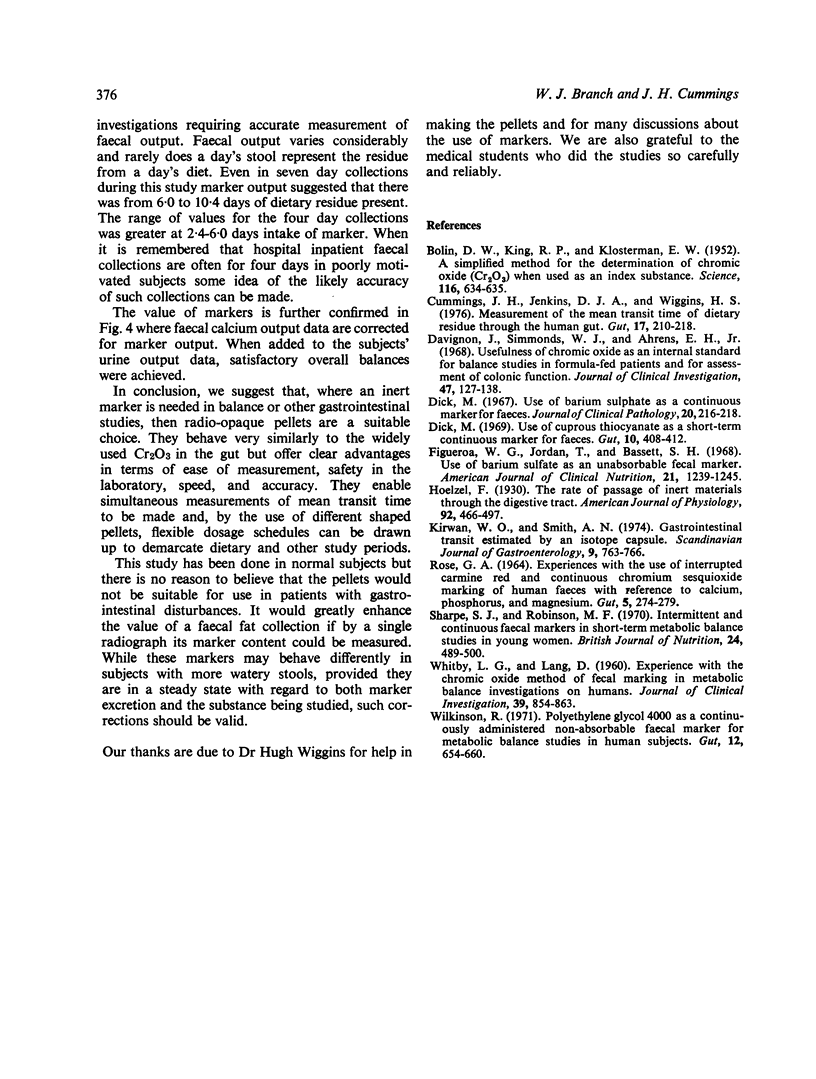
Selected References
These references are in PubMed. This may not be the complete list of references from this article.
- BOLIN D. W., KING R. P., KLOSTERMAN E. W. A simplified method for the determination of chromic oxide (Cr2 O3) when used as an index substance. Science. 1952 Dec 5;116(3023):634–635. doi: 10.1126/science.116.3023.634. [DOI] [PubMed] [Google Scholar]
- Cummings J. H., Jenkins D. J., Wiggins H. S. Measurement of the mean transit time of dietary residue through the human gut. Gut. 1976 Mar;17(3):210–218. doi: 10.1136/gut.17.3.210. [DOI] [PMC free article] [PubMed] [Google Scholar]
- Davignon J., Simmonds W. J., Ahrens E. H. Usefulness of chromic oxide as an internal standard for balance studies in formula-fed patients and for assessment of colonic function. J Clin Invest. 1968 Jan;47(1):127–138. doi: 10.1172/JCI105703. [DOI] [PMC free article] [PubMed] [Google Scholar]
- Dick M. Use of barium sulphate as a continuous marker for faeces. J Clin Pathol. 1967 Mar;20(2):216–218. doi: 10.1136/jcp.20.2.216. [DOI] [PMC free article] [PubMed] [Google Scholar]
- Dick M. Use of cuprous thiocyanate as a short-term continuous marker for faeces. Gut. 1969 May;10(5):408–412. doi: 10.1136/gut.10.5.408. [DOI] [PMC free article] [PubMed] [Google Scholar]
- Figueroa W. G., Jordan T., Bassett S. H. Use of barium sulfate as an unabsorbable fecal marker. Am J Clin Nutr. 1968 Nov;21(11):1239–1245. doi: 10.1093/ajcn/21.11.1239. [DOI] [PubMed] [Google Scholar]
- Kirwan W. O., Smith A. N. Gastrointestinal transit estimated by an isotope capsule. Scand J Gastroenterol. 1974 Nov;9(8):763–766. [PubMed] [Google Scholar]
- ROSE G. A. EXPERIENCES WITH THE USE OF INTERRUPTED CARMINE RED AND CONTINUOUS CHROMIUM SESQUIOXIDE MARKING OF HUMAN FAECES WITH REFERENCE TO CALCIUM, PHOSPHORUS, AND MAGNESIUM. Gut. 1964 Jun;5:274–279. doi: 10.1136/gut.5.3.274. [DOI] [PMC free article] [PubMed] [Google Scholar]
- Sharpe S. J., Robinson M. F. Intermittent and continuous faecal markers in short-term metabolic balance studies in young women. Br J Nutr. 1970 Jun;24(2):489–500. doi: 10.1079/bjn19700048. [DOI] [PubMed] [Google Scholar]
- WHITBY L. G., LANG D. Experience with the chromic oxide method of fecal marking in metabolic balance investigations on humans. J Clin Invest. 1960 Jun;39:854–863. doi: 10.1172/JCI104106. [DOI] [PMC free article] [PubMed] [Google Scholar]
- Wilkinson R. Polyethylene glycol 4000 as a continuously administered non-absorbable faecal marker for metabolic balance studies in human subjects. Gut. 1971 Aug;12(8):654–660. doi: 10.1136/gut.12.8.654. [DOI] [PMC free article] [PubMed] [Google Scholar]


